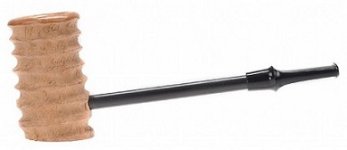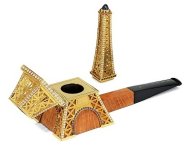Minimalism is a gravely misunderstood beast. It takes a lot of work, study and craft to get right and is often badly imitated because it appears simple. Minimalism requires perfection and purity of scale, proportion and finish to appear as if nothing can be changed without affecting its form or function and that means evaluating every minute detail. Imitation minimalism is elementary, it sees basic shape and materials, but everthing else is an oversight. The idea of minimalism is falsy used as an excuse to cut corners. There are some similarities between the architecture of Corbu, Mies and the latest iterations of McDonald's and Wendy's, but they are not equal.
What I think the OP is trying to describe is a form of vernacular design, one based on a select set of priorities for that given maker that comes from their own personal experience in their part of the world. I look at that pipe and see the embellishments in the radiused top of the bowl and the slight curve of the stem. The portion of the bowl height to pipe length was prioritized over grain structure. I'm glad the OP has found an appreciation for this piece.
There is a lot of value to be found in the vernacular realm, but minimalism just another artistic style.
What I think the OP is trying to describe is a form of vernacular design, one based on a select set of priorities for that given maker that comes from their own personal experience in their part of the world. I look at that pipe and see the embellishments in the radiused top of the bowl and the slight curve of the stem. The portion of the bowl height to pipe length was prioritized over grain structure. I'm glad the OP has found an appreciation for this piece.
There is a lot of value to be found in the vernacular realm, but minimalism just another artistic style.













